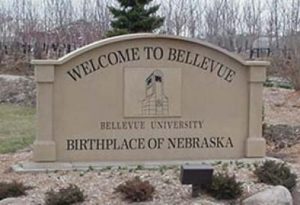Bellevue, Nebraska

Due to the climate and environmental conditions in Bellevue, the community has an ever-present and ongoing pest problem that cannot be removed completely, but instead controlled effectively. Pests seek shelter and warmth in homes during the colder months and they are not only distressing for homeowners but can also be harmful to them and the structure of their property.
The state of Nebraska is located in the Midwestern and Great Plains regions of the US, the capital city is Lincoln and the biggest city in the state is Omaha. It is the 16th largest state in the US and the 37th most populated with a population of around 2 million residents. The state experiences common tornados and thunderstorms and is popular for farming and cattle. Bellevue is located in the Sarpy Country of Nebraska and has a population of 50,500 residents. It is also the oldest city in the state of Nebraska. The city’s climate is the primary cause of the present and threatening pest issues. On average, Bellevue gets 30 inches of rainfall, 25 inches of snowfall and 213 sunny days. The month of July has the hottest days of the year with temperatures reaching 88 degrees and the month of January has the coldest days of the year with temperatures dropping to 12 degrees.
Pests can be extremely difficult to get rid of once they spread across the home and mark their territory. Homeowners may attempt to use DIY methods to deal with the problem before consulting an expert in an effort to save money, however, they aren’t very successful. There are many DIY methods that are popular such as setting traps, putting poison in areas where they are likely to be or have been seen and storing food in pest-proof containers and jars. There are also natural methods that can be used to get rid of pests such as filling homes with strong smells that pests dislike such as peppermint and tea tree to make pests feel uncomfortable and unwelcome. The easiest and most effective way to get rid of pests such has insects is to vacuum them up using a pest-specific vacuum one. This allows large numbers of pests to be caught at once. Other DIY methods include using insect swatter (this is tedious and unsuccessful with large infestations) and catching them which is extremely useless in the case of large infestations.
Although some of these methods can be useful for smaller infestations, they are unsuccessful against larger infestations and the best method for effectively and quickly dealing with them is to hire the services of a professional and licensed pest controller. Not only do they have the expertise to handle the problem but they also have the equipment, means and knowledge to do so efficiently, thoroughly and completely.
